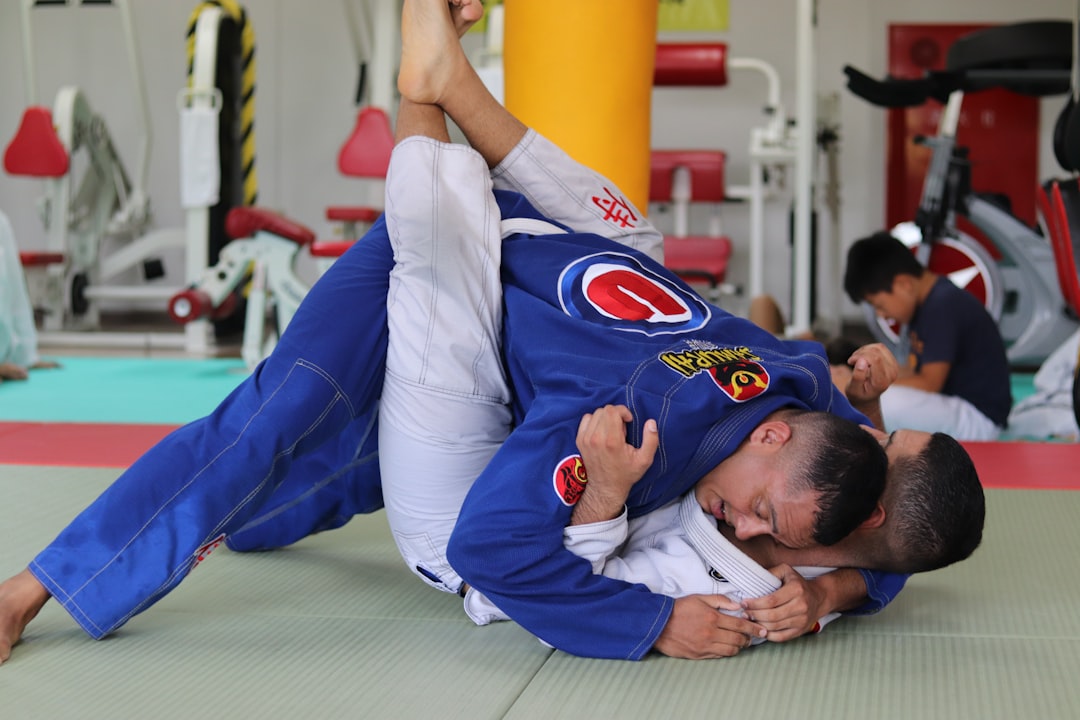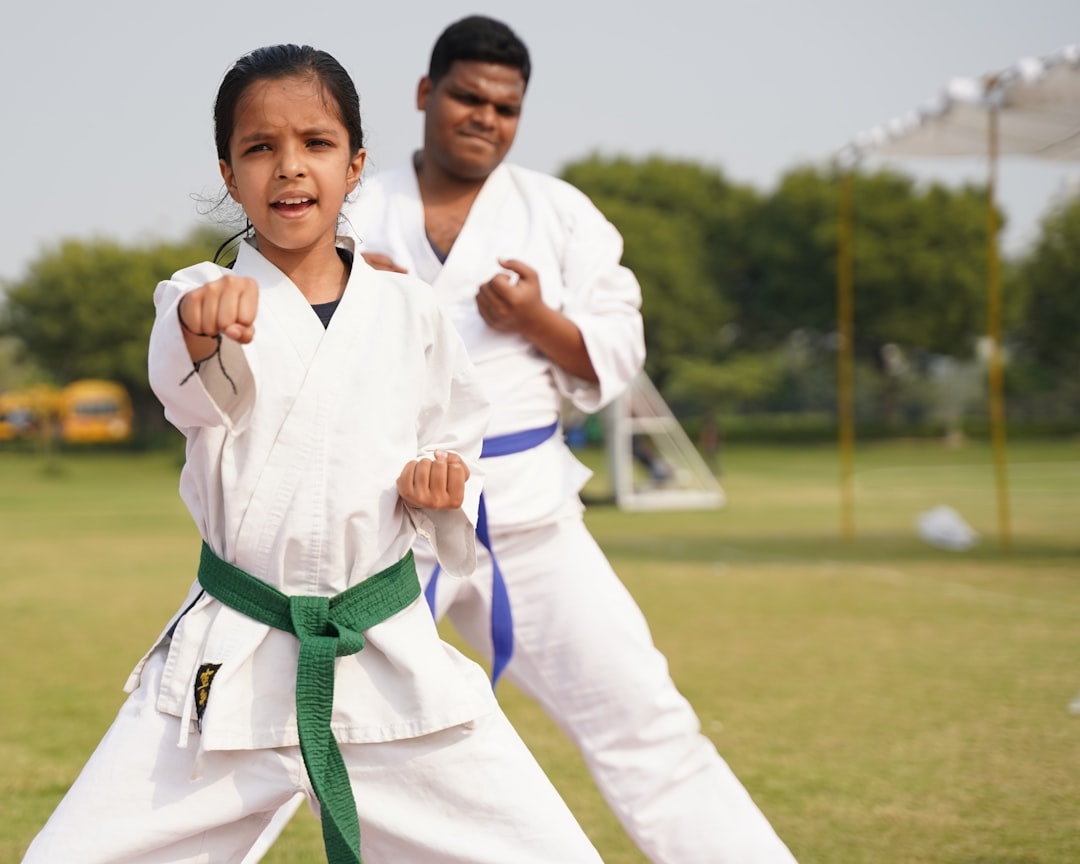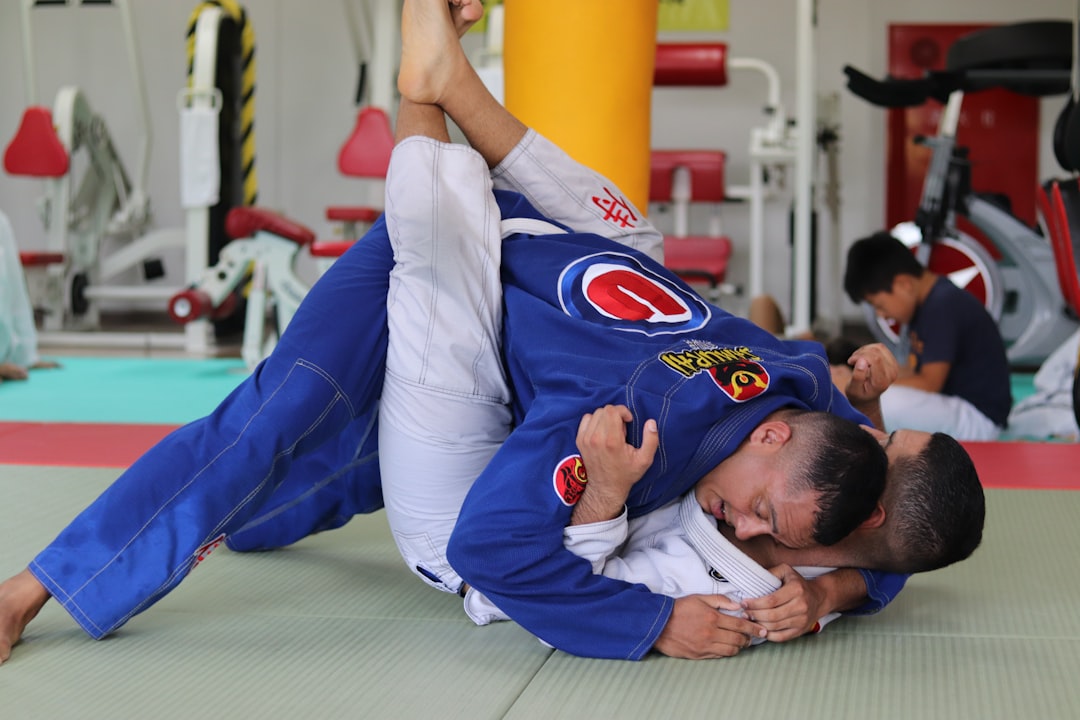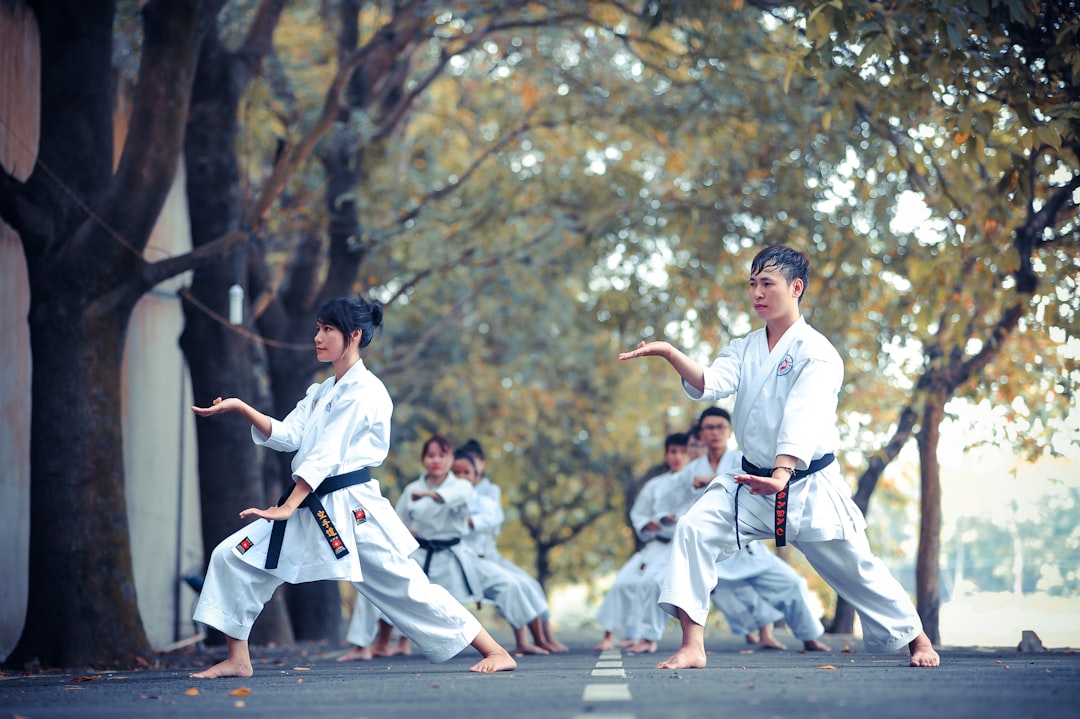The karate outfit, known as a "gi" or "keikogi," is more than just an athletic uniform; it's a symbol of respect for tradition and discipline within the martial arts community. The traditional gi consists of a white jacket, black trousers, and an obi belt, with variations across different karate styles that reflect their unique cultural roots. The design of the gi is purposefully tailored to enhance movement without constraint and to promote modesty among practitioners. Colored belts attached to the obi signify the wearer's skill level and rank within the discipline. Throughout history, the keikogi has evolved from functional military attire to a uniform that balances tradition with contemporary design for both training and competition. In selecting a gi, one must consider fit and material for optimal comfort and performance, ensuring durability and breathability. Proper maintenance is also essential, involving regular washing with gentle detergent, air drying to prevent damage, and avoiding excessive wear between cleanings to maintain the garment's longevity and respect for tradition.
exploration of traditional martial arts attire reveals a deep-rooted connection between the practitioner and their garb, particularly in the realm of Karate. The quintessential Karate uniform, known as the Gi, is central to the discipline, reflecting both cultural heritage and functional design. This article delves into the significance of the Gi, tracing its evolution and the variations present across different styles and organizations within Karate. Whether you’re a seasoned martial artist or a curious newcomer, understanding the karate outfit name and how to properly select and maintain your Gi is essential for authentic practice and respect for tradition. Join us as we unravel the essence of this timeless attire.
- Understanding the Significance of Traditional Karate Attire
- The Evolution and Design of Karate Uniforms
- The Gi: The Staple Karate Outfit Name
- Variations in Karate Uniforms Across Different Styles and Organizations
- Selecting and Maintaining Your Karate Gi: Tips for Practitioners
Understanding the Significance of Traditional Karate Attire

When engaging in the practice of karate, the uniform one dons is far more than mere clothing; it represents a deep respect for tradition and the discipline’s rich heritage. Known colloquially as a “gi” or “keikogi,” this garment is an integral part of the martial art experience. The gi serves to standardize the practitioner, allowing for an unobstructed view of form and technique during practice and performance. It consists of a jacket, trousers, and a belt, known as an obi, which also signifies the wearer’s rank within the karate community. What is the name of the traditional karate outfit? The gi, which includes a white jacket, black trousers, and a matching or contrasting obi, is the specific attire referred to. Is the design of the gi purposeful? Absolutely; its simplicity allows for motion without restriction, while the standardized color helps to foster humility and respect among practitioners. The gi’s design also facilitates easy identification of each participant’s skill level through the colored belts they wear, reinforcing the discipline and hierarchy inherent in karate.
The Evolution and Design of Karate Uniforms

Karate uniforms, known as “keikogi” or “gi,” have a rich evolutionary history that reflects the discipline’s origins and its transformation into a global martial art. The traditional keikogi consists of a jacket, trousers, and belt, with the design intended to facilitate movement while providing durable coverage. Over time, the karate outfit has seen adjustments to meet the functional needs of practitioners and to align with the changing aesthetics of modern society. What are the key elements that have shaped the evolution of karate uniforms? The answer lies in both the practical aspects required for the practice and the cultural influences that have permeated the sport over decades.
Initially, the keikogi was quite simple, with a heavy fabric and design features that allowed for mobility during techniques like kicks, blocks, and strikes. As karate evolved from an Okinawan discipline to an international sport, the uniform underwent modifications. For instance, the thickness of the fabric was reduced, and the fit became more standardized to ensure consistency across different practitioners. Are the modern keikogi significantly different from their historical counterparts? Yes, contemporary designs often incorporate lighter materials and a tailored fit that is both functional for performance and comfortable for everyday training. This evolution underscores the dynamic nature of karate as a martial art, where tradition meets innovation in the design of its uniforms.
The Gi: The Staple Karate Outfit Name

Within the realm of martial arts, the karate uniform holds a significant place as the quintessential garb for practitioners. Known as the “Gi,” this traditional outfit is a staple in the discipline of karate, serving both functional and ceremonial purposes. The Gi typically consists of a jacket and pants, both constructed with cotton or hemp materials, which are designed to facilitate movement and durability during rigorous training sessions. Does the Gi have a specific name that distinguishes it from other martial arts uniforms? Yes, it does. The term “Gi” is unique to karate and is not universally applied across all martial arts; it specifically refers to the white garb with no belt worn over it by practitioners during training and competition. The design of the Gi allows for a clear view of the practitioner’s movements, enabling both instructors and peers to analyze technique and form. Whether you are a beginner or an experienced martae artist, the Gi remains a constant element that represents the essence of karate practice.
Variations in Karate Uniforms Across Different Styles and Organizations

Karate practitioners don their uniforms as a symbol of respect, discipline, and tradition. While the traditional karate outfit, often called a gi, is common across various styles, there are variations in the design and specifications of these uniforms that reflect the distinctiveness of each style’s origins and philosophy. For instance, Shotokan karate practitioners typically wear a white gi with different color belts representing their skill level. In contrast, styles like Kyokushin may have slightly heavier and more robust gis to accommodate full-contact sparring. The International Karate Federation (IKF) and World Karate Federation (WKF), which govern different karate disciplines, also specify the exact dimensions and weave of the gi to ensure consistency and fairness in competitions. What’s more, some traditional Okinawan styles might incorporate unique colors or designs that reflect their cultural heritage. Are the colors of the belt and the fabric of the gi consistent across all karate styles? No, variations exist that are specific to the style being practiced, as well as the organization under which it falls. These differences underscore the rich tapestry of karate’s global practice and highlight the importance of adhering to the specific guidelines set forth by each style’s governing body for authenticity and standardization in competition settings.
Selecting and Maintaining Your Karate Gi: Tips for Practitioners

When selecting a karate outfit, also known as a gi, it’s crucial to consider the material and fit to ensure comfort and functionality during practice. A traditional karate gi typically consists of a jacket, trousers, and belt, with variations in design depending on the specific style or school of karate you are practicing. When trying on a gi, make sure it allows for a full range of motion, as karate requires a wide array of movements that must be executed with ease. Additionally, the gi should not be too tight or too loose; it should fit snugly without restricting your movements. The fabric should be durable and breathable, often made from cotton or a cotton blend, to withstand the demands of rigorous training while keeping you cool and comfortable. Once you’ve selected the right gi for your needs, maintaining it properly will ensure its longevity and keep it in good condition. Regularly washing your gi after each use is recommended to remove sweat and odors, which can wear down the fabric over time. Use a mild detergent and avoid bleach to preserve the color and integrity of the material. Additionally, air drying your gi is the best method to prevent shrinkage and damage from heat. Taking care of your karate outfit not only respects the tradition but also ensures that you have a reliable uniform for your practice sessions. How often should you wash your karate gi? After each use to maintain hygiene and extend the life of the garment. Is it better to hang dry or machine dry your karate gi? Hang drying is preferable to prevent shrinkage and damage from high heat, extending the lifespan of your gi.
In conclusion, the karate outfit, commonly known as a gi, serves not only as the traditional attire for practitioners but also as a symbol of respect and discipline within the martial arts community. The gi’s design has evolved over time to meet both functional and aesthetic purposes, reflecting the rich heritage of karate while accommodating the diverse styles and organizations that practice it globally. For anyone embarking on their karate journey or seeking to maintain their attire, understanding the significance of the gi and how to care for it is key to honoring this ancient tradition. Whether you are a beginner or an experienced martial artist, the gi remains an essential element of the practice, embodying the essence of karate’s values and spirit.
